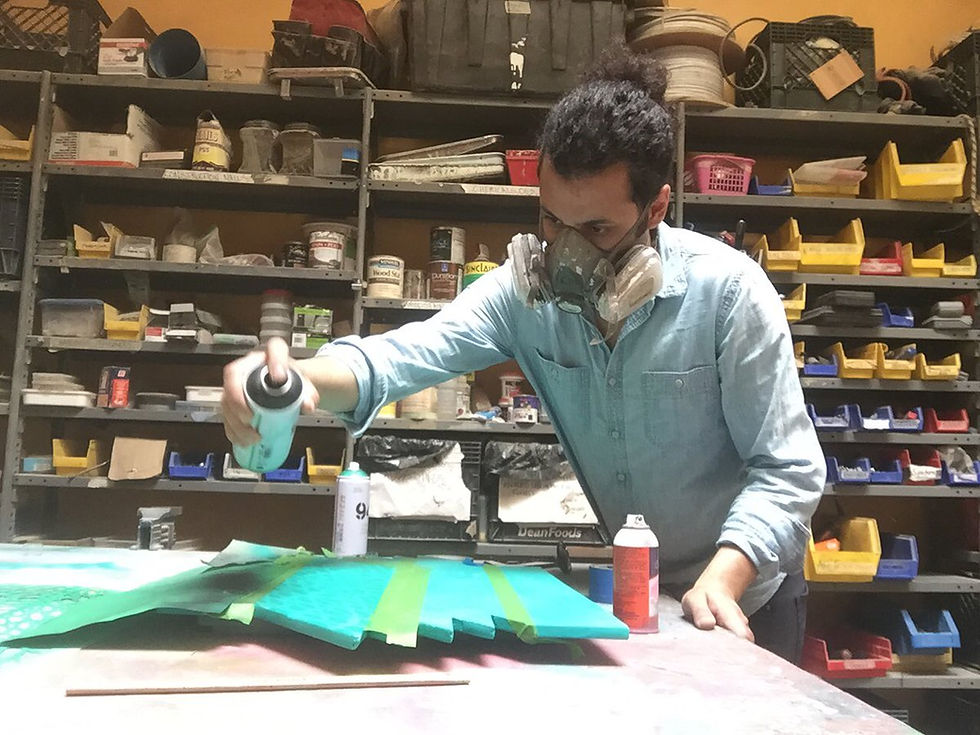Art handler / Art preparator
- Keyvan Shovir

- Mar 29, 2020
- 3 min read
My journey as an artist and researcher is a constant dialogue between my hands and history. As a contemporary creative, I've learned that a true understanding of craft comes from a deep dive into its origins. This is a story about how my career as an Art Handler and Art Preparator became a profound path to reconnecting with my roots and heritage. It all began during my MFA studies at California College of the Arts (CCA) in San Francisco.
The Early Steps: The Student Years (گامهای اولیه: سالهای دانشجویی)
Studying in the US, I faced a significant challenge: due to political sanctions, I no longer had family financial support. This term, "sanction," impacted my life as it has countless others. With no family or siblings in the country, my only option was to work and study simultaneously. As an artist, I wanted to stay connected to the art world, so I took a job as a Gallery Assistant at CCA. My responsibilities included welcoming guests, providing information, and maintaining artworks that required technical support, such as video and sound installations.
This experience led to my next role as an Art Handler (مسئول چیدمان آثار هنری) at CCA while still an MFA candidate. For two years, I had the honor of helping my fellow students display their work in the gallery space. It was a remarkable experience. Students often came with exciting ideas that were outside the gallery's typical norms, and helping them realize their vision pushed me to think creatively about how to display and light artworks. I gained confidence in working with tools and developed a deeper understanding of exhibition design.
Building a Career: From Galleries to Museums (ساختن یک حرفه: از گالریها تا موزهها)
After graduation, I applied for a job as an Art Preparator at the Bedford Gallery in Walnut Creek. This was a turning point. My career took a new direction, and I had the privilege of working with amazing international artists like Patrick Dougherty, Portia Munson, and Ned Khan. Learning from them and applying their techniques to my own art practice was an invaluable experience.
I continued to work with other prestigious institutions, including the Palo Alto Art Center, Gallery Wendi Norris, and the Museum of the African Diaspora. Each experience taught me something new and helped me build relationships with artists and curators. After working for five years as an Art Preparator, I finally became eligible to apply for a position at the Asian Art Museum in San Francisco. This was the place I had always dreamed of working.
A Return to Roots: The Asian Art Museum (بازگشت به ریشهها: موزه هنر آسیایی)
I had always been emotional about my heritage. The first time I saw ancient Iranian artifacts at the Asian Art Museum, I cried. I felt immense pride in my Iranian roots. It was here that the Cyrus Cylinder was exhibited—a clay document inscribed in Akkadian cuneiform script. Created in 539 BCE by order of Cyrus the Great (کوروش بزرگ), it is a profound symbol of tolerance and freedom. Cyrus the Great broke tradition by freeing slaves, allowing exiled people to return home, and establishing racial equality.
I remember being so emotional during my interview. When the interviewer asked me why I wanted to work there, I said I wanted to connect to my roots. I wanted a daily reminder of who we are as Iranians.

The journey from a struggling MFA student to an Art Preparator at a world-class museum was more than a career path; it was a homecoming. It was an opportunity to engage with history not just as a researcher, but as a direct participant in preserving and presenting the artistic legacy of my people.




















Comments